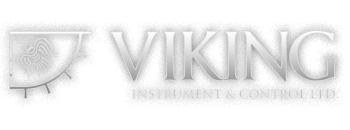For a long period of time, threaded pipes have been the most common method of joining and sealing most fluid line systems. Not only are pipes simple to assemble but they are cost effective. On the other hand, pipes have many limitations. They are not bendable except for some specific situations where a direction change needs a fitting. Size identification is also difficult which requires experience. Today tubing is a more commonly used than pipes. Similar to pipes, tubing is an elongated and hollow metal structure that is typically joined using autoclave fittings. These autoclave fittings are responsible for providing the leak-tight sealing.
The advantages of tubing
- Easy size identification. Tube size is indicated with its outside diameter; a ¼” tube actually has a ¼” diameter.
- Tubing ahs a higher strength to weight ratio because it doesn’t require extra wall thickness to accommodate threads.
- Its characteristic of bendability reduces connections and possible leak paths and lowers pressure drops. This reduces time and costs of labor and materials.
- Tubing and autoclave fittings are more easily disassembled and reassembled since there are fewer connections involved.
- Tubing does not require thread tapes or lubricants which reduces installation time and ensures a cleaner system.
Variables in the selection of tubing compatible with autoclave fittings
- Materials – different kinds are designed for a variety of tubing materials which will comply with various recognized standards
- Welded vs. seamless tubing – while many of the manufactured tubing are suitable with these fittings, the use of seamless tubing is recommended because of increased consistency in performance and a higher maximum allowable working pressure.
- Tubing hardness – proper tubing performance demands that the ferrules of the autoclave fittings be significantly harder than the tubing material on which it is used. However, it is important to note that when using welded tubing, extra care must be taken that the weld beads are not too hard.
- Tubing wall thickness – the type of suitable tubing should be based on application pressure, temperature and shock conditions. Charts are provided by manufacturers showing the maximum allowable working pressure for a given wall thickness of a tubing that is used for ambient temperature.
Guidelines in installation of tubing and autoclave fittings
- For proper installation, it is essential to verify that all components are present, insure proper insertion of the tubing into the fitting and confirm sufficient tightening of the fitting nut.
- Hydraulic presetting tools can simplify hard-to-reach installations or installations of larger-sized tubing
- Manual presetting tools are available for 1” and undersized fittings that are particularly well-suited for the hard-to-reach applications.
- The tube stub adapters are excellent tools that can be used when faced with possible alignment issues.
- Port connectors are used to close connections of one tube fitting to another.
- A nut and ferrule safety changer allows for the safest method of replacing fitting components by eliminating the need for ferrule handling while ensuring proper ferrule orientation.
- Tube inserts are used to support soft pliable plastic tubing to ensure safe and efficient performance.


